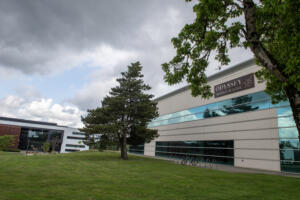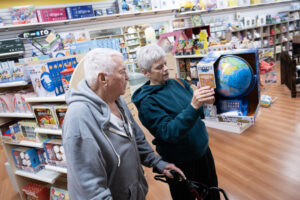More than 100 people packed into the Camas Library Monday night to hear Matthew Erlich, a speaker for the Seattle-based Holocaust Center for Humanity, tell his mother’s incredible tale of perseverance and survival in the face of Nazi death camps.
“My mother died in 2009 of lung cancer,” Erlich told the crowd at the beginning of his presentation. “The doctors said she had six months to live, but she lived six years. By the end of this discussion, that will be no surprise to any of you.”
Indeed, no one could question Felicia Erlich’s will to survive. Born Felicia Lewkowicz on June 21, 1924, Erlich’s mother grew up in Poland with her three brothers and three sisters, parents Rozalia and Zygmund, and Polish-speaking, Christian nanny, Helcha.
The nanny’s details are important, Erlich said Monday night, because it meant his mother, unlike most Jewish children living in Poland in the 1920s and 1930s, grew up speaking Polish and understanding Christian holidays. Felicia also learned to speak German, Ukrainian and French. “Felicia grew up without a Yiddish accent,” Erlich said. “This later proved to save her life.”
Showing his family’s portrait in 1937, Erlich points out his grandmother, Rozalia. Like her daughter, Felicia, Rozalia was not a woman who gave in to fear. When a Nazi soldier bumped into her one day and hissed, “Out of my way, Jew,” Erlich’s grandmother looked him in the eye and responded, “My name is Rozalia.”





